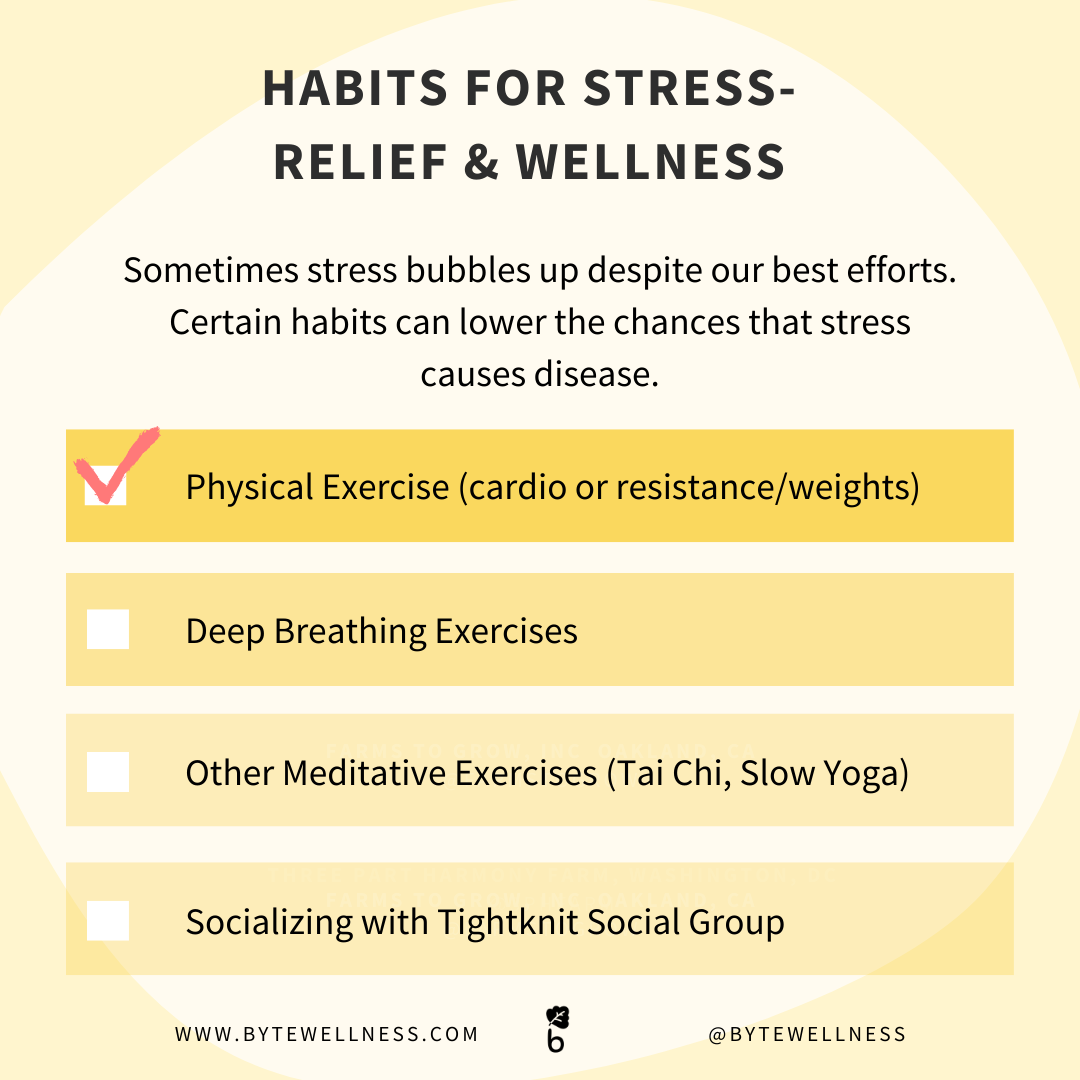Breathing for Stress Management
Hi Byte Wellness Fam!
I’m wishing you plenty of chances to rest and regenerate as we celebrate Pride Month and observe Juneteenth.
Sometimes our bodies and minds need complete rest…doing absolutely nothing. Other times, we can benefit from active rest. Know what that is?
Active rest is the work we do to reset. Active rest isn’t too stressful to our minds and bodies but it produces reactions that are integral to our systems of wellness resilience (balancing our nervous system, immune systems and metabolic system).
Check the graphic below to learn which types of active rest can boost wellness resilience with their anti-inflammatory effects.
Anti-Inflammatory Stress-Management Exercises
4 Anti-Inflammatory Active Rest Exercises
Physical Exercise
Deep Breathing Exercises
Other Meditative Exercises (Yoga, Tai Chi)
Supportive Social Interactions
Studies show that regular physical exercise cuts our levels of inflammation. One study in particular, showed that people who did only 20 minutes of moderate-intensity exercise had lower levels of an inflammatory marker called TNF -alpha compared to people who didn’t exercise for those 20 minutes.
Based on those results, it seems possible to get the anti-inflammatory benefit of exercise with moderate intensity exercise. That means we don’t always have to do a killer workout to get a major wellness boost.
Other studies point to the anti-inflammatory benefit of meditative activities (that aren’t usually thought of as workouts).
One systematic review (which is a big study of studies) found lots of different types of yoga activity lowered inflammatory markers in study subjects.
In these studies, the researchers saw anti-inflammatory benefit from activities ranging from deep yogic breathing (pranayama) and yoga movements and postures.
Just like the 20-minute workout study above, research on deep breathing shows we don’t have to spend hours a day practicing in order to see results. Improvements in inflammatory markers were seen as early as 5 minutes into the deep breathing exercises compared with a focused reading exercise.
Yoga isn’t the only ancient practice that can help us restore immune balance. Another study points to Tai Chi as an anti-inflammatory activity. Researchers found that older women who reported loneliness and social isolation had lower levels of the inflammation generator, NkFB, after practicing Tai Chi vs. taking a health education course.
So far, all our active rest options have included movement of some kind (even if we’re only moving our bellies and diaphragms in deep breathing). But, it turns out that another non-movement activity is tied to our levels of inflammation: social activity.
Increasingly, researchers find a connection between lower levels of inflammation AND high-quality social activity with people who give us emotional support. The theory is that they’re both the chicken and the egg. Interacting with a tight-knit social circle seems to lower levels of inflammation just as lower levels of inflammation increase our desire to socially interact.
So, if you’re someone who always chooses the solo netflix-and-chill session over hanging out with a supportive loved one, you might want to ask yourself if you could benefit from the anti-inflammatory benefit of social interaction.
While you think on that, don’t forget to answer the discussion question from this week.
Discussion Question:
Question: What are your favorite ways to relieve stress?
How can you do more of that?Do your favorite stress-relievers include any of the activities on our active rest list? If not, do you think you’ll try any of these? Let me know what works for you!
Happy Healthy Living,
Dr. Wuse

